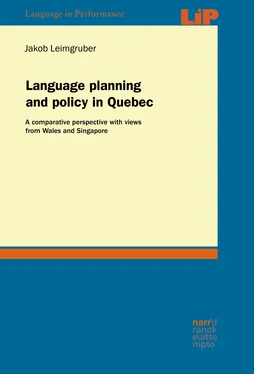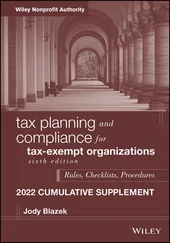The British presence in Canada coincides to a great extent with French presence, though their numbers were, initially, lower. British expeditions in the late sixteenth century and early seventeenth century brought explorers such as Frobisher, Davis, and Hudson in search of the Northwest Passage, the famed sea route from the Atlantic to the Pacific, long supposed to exist but only recently (since 2009) having become more navigable, expected at the time to reduce the long journey to Cathay (China, 契丹). While the Passage itself remained elusive, the expeditions did provide the British a foothold in the heart of the continent, enabling them to establish trading ports and links with the aboriginal fur trade networks. The chartering of the Hudson Bay Company in 1670 increased British activity on the shores of the Hudson Bay (see Figure 2.1), and resulted in more trading posts and settlements around river mouths as well as further upstream. Later in the eighteenth century, the settlements in the future thirteen colonies began to expand, largely driven by the settlers’ search for additional resources. Furthermore, a larger number of new arrivals meant that the British soon overtook the French, as the following passage from Boberg (2010, 57) explains:
French emigration to North America amounted to no more than 10000–15000 people over the 150-year history of New France; natural increase was the main factor in raising the colony’s population to around 70000 by 1760 (Charbonneau et al., 2000, 104, 106). By contrast, Britain’s American colonies received over 300000 immigrants over the same period, helping to raise their population to well over a million by 1760 (Gemery, 2000, 171).1
The consequence of this rise in the British presence in North America was an ‘inevitable clash of French and British colonial aims’ (Boberg, 2010, 58), resulting in a number of skirmishes eventually culminating in the Seven Years’ War (1756–1763). This war, rather a series of battles fought globally between the major powers at the time (foremost Britain and France, but also Prussia, Austria, Spain, Sweden, Portugal, Russia, the Mughal Empire and a number of German states, but also including several aboriginal nations in Canada and the American colonies), ended with complete British control over the entirety of eastern North America. It actually began with the British assault on Acadia in 1755, followed by the expulsion of the Acadians, an event remembered as Le grand dérangement in which 11500 of the region’s 14000 Acadians were deported until the end of the war, to locations ranging from Quebec to Louisiana. French retaliation saw the capture of British forts south of the Great Lakes, but 1759 brought a series of British victories, culminating in the battle on the Plains of Abraham outside Québec, the capital city of New France, leading to its capture after a siege lasting three months. French counteroffensives in 1760 were defeated, with final surrender at Montreal in September 1760. With the exception of Saint-Pierre-et-Miquelon (which would change hands repeatedly for the following one hundred years), France had lost control of its erstwhile possessions in North America with the Treaty of Paris of 1763. This loss of control effectively cut off Francophones in North America from the ‘mother country’ in Europe, with repercussions in linguistic terms (varieties of French on the two sides of the Atlantic diverging through decreased contact) and in ethnic population terms (with dramatically reduced immigration from France, internal procreation became the only source of population increase).
A thorough account of English-speaking migration to Canada is given in Boberg (2010, 58ff). Apart from the English mission led by (the Venetian) John Cabot in 1497, Humphrey Gilbert was chartered in 1583 to establish an English colony on St. John’s, Newfoundland. Actual settlement was seen as less important than fishing monopolies, so that only some small settlements were allowed after 1610, and they were often subject to harassment from British fishermen as well as French colonists. Nonetheless, when the British took control in 1763, pockets of English-speaking settlers (primarily from the West Country and Ireland) had already ‘existed tenuously for 150 years’ (Boberg, 2010, 59). After the Acadian deportation, American colonists were invited to settle Nova Scotia; many came from New England, and more would come after the revolutionary war. Loyalists started moving into Canada from 1775, and after the evacuations of Boston (1776) and of Philadelphia (1778) more came, often by ship via New York City, which was evacuated in 1783. Nova Scotia and New Brunswick were the destinations of choice: 35000 settlers arrived (Boberg, 2010, 62). Other Loyalists arrived over land, primarily to what is now Quebec and Ontario: around 7000–8000 were eventually moved upstream into Ontario (Boberg, 2010, 63). Care was taken not to upset the French–English linguistic balance too much in Quebec with the arrival of so many new anglophone settlers. As a result, only around 2000 Loyalists remained in the western part of Quebec, and just 300 in Montreal. Post-Loyalist emigration from America occurred in the Eastern Townships of Quebec around 1791: ‘by 1817, approximately 20000 people had settled [there], virtually all from northern New England’ (Boberg, 2010, 64).
Direct immigration from Britain had already begun before the war. Settlers came primarily from Scotland, whence 18000–21000 arrived between 1791 and 1811. In the late eighteenth century and early nineteenth century, English and Irish settlers arrived in their tens of thousands, resulting in a quadrupling of Newfoundland’s population within thirty years (Boberg, 2010, 65). The population was roughly half English and half Irish by 1857, though on St. John’s, about four times as many immigrants were Irish-born than English-born. It bears pointing out, as does Boberg (2010, 66), that many of the Irish (and, indeed, Scottish) settlers were in fact speakers of Gaelic rather than anglophone – although knowledge of English, if not full bilingualism, may have been more common. In the nineteenth century, poverty and economic disenchantment drew more Europeans to emigrate to the Americas, such as Scottish peasants suffering from the Highland Clearances or farm labourers made redundant in the wake of large-scale industrialisation. Boberg (2010, 68–69) also mentions that in the wake of the defeat of Napoleon and in view of Britain’s global Empire, it needed people to populate its dominions (Australia, New Zealand, and British North America), administer them, and defend them. Financial incentives were offered to thousands of migrants who could not afford passage.
Not all migrants from Britain went to Canada, and not all who arrived in Canada stayed there. The difficulty in assessing the statistics of migration for that period (which includes the massive waves of emigration resulting from the Irish potato famine 1845–1849) is described at length in Boberg (2010, 70–76). What is certain is that most arrivals from Britain arrived at the port of Québec, and, after the 1850s, Montreal. Even if a large proportion of these arrivals were transitory migrants, small numbers remained in the area, and Montreal, especially, soon took on a decidedly multiethnic and multicultural face. There were, obviously, the Francophones, descendants of the early New France colonists (though by 1851 they were a minority of 45 % (Levine, 1990, 8)), as were Anglophones, who had had a presence at least since the Conquest, and who, by then, could be classified into a wealthy mercantile class, typically Scottish, and a mostly Irish working class (Levine 1990, 8; Boberg 2010, 80–81). The new wave of immigration brought more Irish, Scottish, and English people, but also a large number of Germans and Dutch, and, later in the early twentieth century, Jews and Italians, the latter settling in distinct ethnic neighbourhoods of Montreal.
Читать дальше












